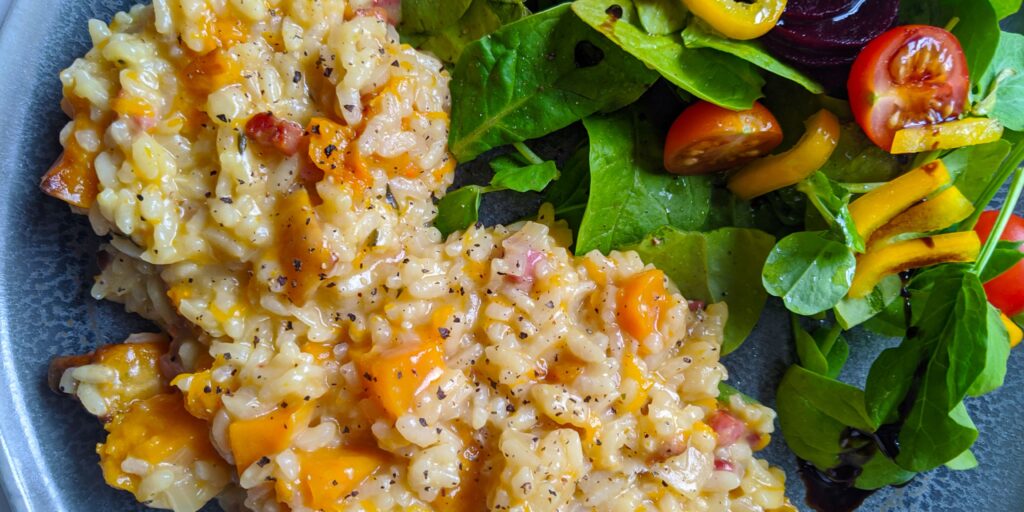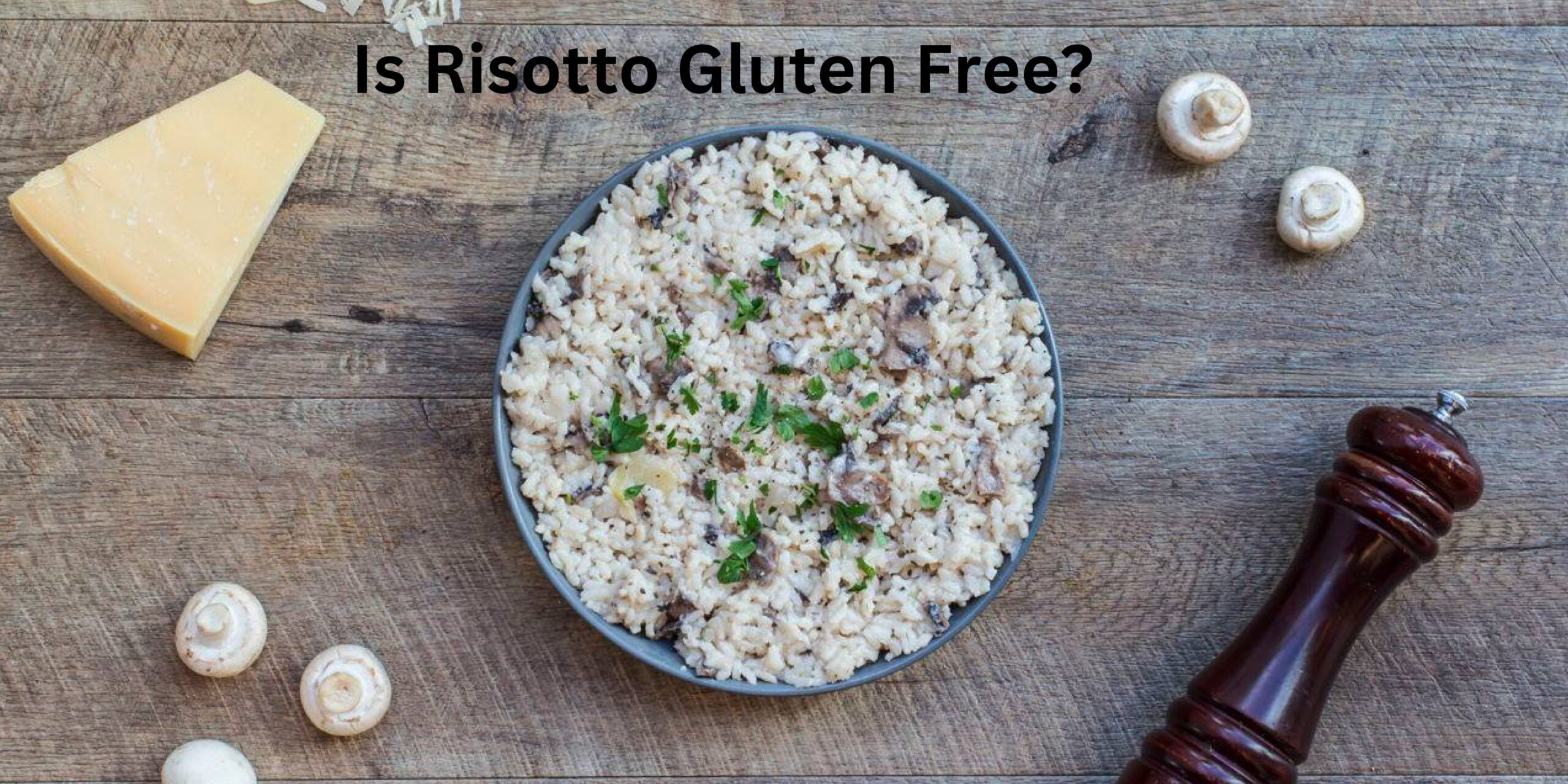Risotto lovers, rejoice! Your favorite cream-laden Italian comfort food is not off limits for those avoiding gluten. There is no need to wistfully gaze at your dinner date’s plate heaped with flawlessly al dente rice, convincing yourself you can get by on salad alone. With a few easy tweaks, you can savor spoonful after spoonful of melty goodness, sans gluten guilt.
But isn’t risotto loaded with ingredients? How can we be sure that risotto is gluten-free? Excellent question. Like many celebrated dishes, classic risotto recipes involve an enticing mix of items melding into one glorious bite. And a complex blend ups the chances of gluten sneaking in somewhere. Have no fear, though – I’m breaking this down so you can eat without a care.
What is Risotto?
Risotto is a rice dish from northern Italy that is usually made with rice varieties like Arborio, Carnaroli, or Vialone Nano which are short-grain and high in starch content. Before adding liquid gradually, the rice grains are sautéed in fat or oil. This lets the rice absorb the stock gradually, releasing its starch and giving it a creamy texture.
Broth, wine, onions, herbs, spices, vegetables, cheese, meat, or seafood commonly flavor this iconic preparation. The rice and chosen mix-ins meld into a smooth, velvety meal served warm in individual portions.
Do Risotto Ingredients Contain Gluten?
Risotto’s core components—rice, broth, onions, herbs, oils, or fats—lack gluten in their natural unprocessed forms. Even when made vegetarian, the dish relies on intrinsically gluten-free ingredients.
Potential problematic ingredients like soy sauce are avoidable in basic recipes. If properly prepared, even additions like cheese pose little cross-contamination threat since any tolerable dairy gets omitted per the individual’s needs and restrictions.
Unfortunately, gluten can sneak its way into many risottos via thickening agents or manufacturing processes.
Hidden Sources of Gluten in Risotto
Despite its fundamentals centering on gluten-free rice and vegetables, various ingredients often used to make or serve risotto may contain gluten, including:
Stocks and Broths: While stocks and broths are generally gluten-free, some brands add wheat. Bouillon cubes, canned and boxed stocks as well as broths at restaurants may have gluten unless verified. When dining out, don’t assume stocks are safe—always ask!
Wine and Vinegar: Trace amounts of gluten could be present in certain wines or vinegar if grain-based additives were introduced during processing. Some vinegars additionally go through a malting stage. Verify all vinegar and wines used are certified gluten-free, especially with homemade risottos.
Garnishes and Mix-Ins: Breadcrumbs, soy sauce, commercial seasoning blends, croutons, and breaded/battered mix-ins pose obvious red flags. But even truffle oils could conceal gluten from grain-derived alcohol solvents used for extraction. Double-check each addition!
Thickeners: Wheat flour may bind risottos, including the traditional French technique of adding raw rice flour (not gluten-free!) at the end for extra creaminess. Verify no flour gets used as a shortcut thickening agent.
Cross-Contamination: Even gluten-free ingredients can contaminate risottos when shared cooking equipment or surfaces aren’t properly cleaned. Utensils, pots, and pans must be thoroughly sanitized between uses.

Tips for Enjoying Gluten-Free Risotto
When prepared properly with certified ingredients, risotto remains comfortingly on the menu for gluten-free diners. Follow these guidelines for savoring worry-free:
- Verify all stocks and broths used are explicitly labeled “gluten-free”
- Use only gluten-free wines, vinegar, oils, and flavor extracts
- Select whole-food mix-ins without breading, batter, or unknown thickening agents
- Specify “gluten-free” when ordering risotto at restaurants
- Cook using dedicated gluten-free equipment and workspaces or meticulously cleaned tools
The Bottom Line
Traditional risotto recipes revolve around gluten-free whole foods like rice, vegetables, herbs, and gluten-free broths. While many common additions and preparation methods pose cross-contamination risks, consciously verifying every ingredient and following proper gluten-free protocols allows virtually anyone to enjoy this iconic Italian classic safely.

I’m Neasa Miller, a professional dietitian with 5 years of experience. I founded glutenfreelifestyles.org to assist people online in embracing gluten-free living. Read more about me
